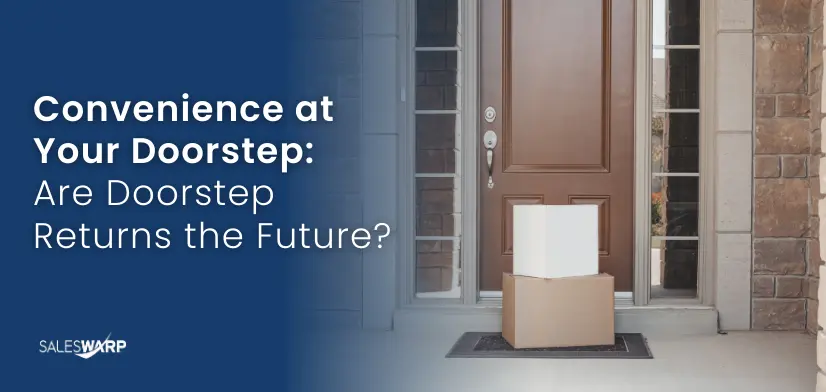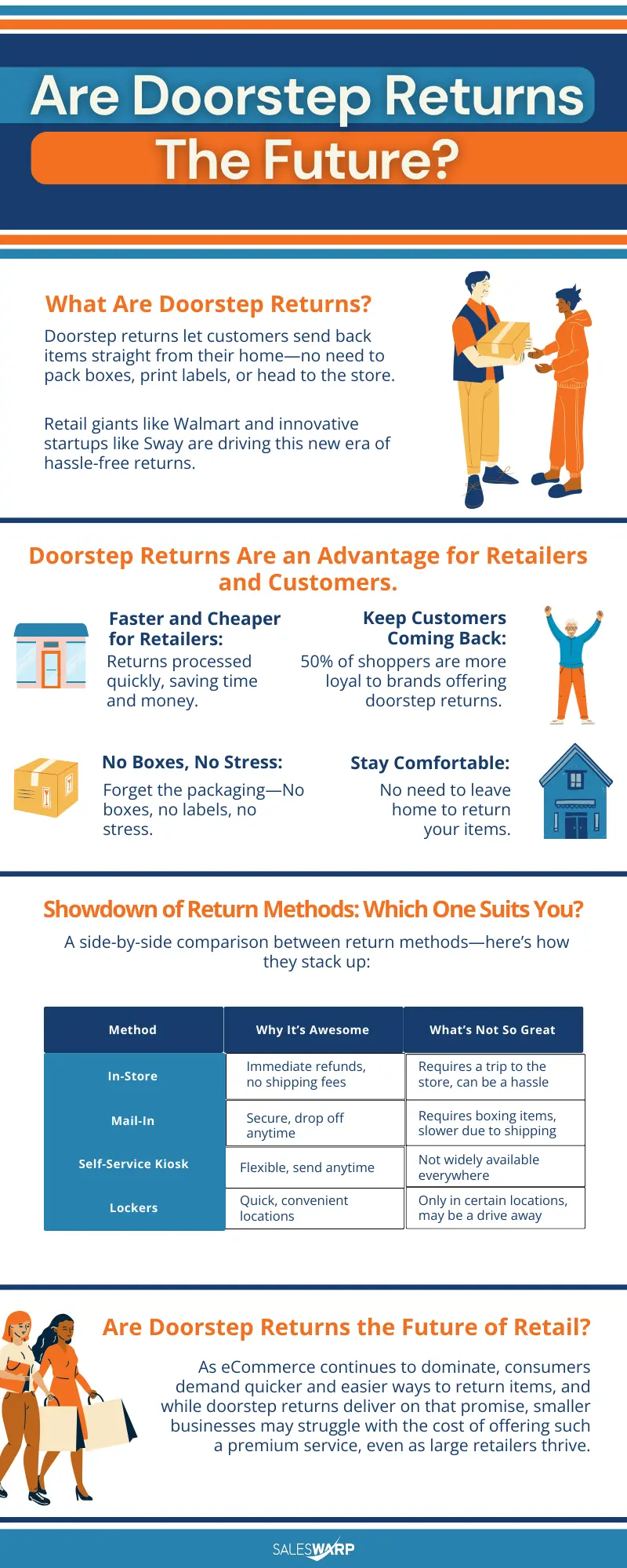Are Doorstep Returns the Future?

Do Doorstep Returns Streamline the Returns Process?
In today’s fast-paced retail landscape, consumer expectations are higher than ever, especially regarding returns. As e-commerce continues to grow, so does the need for efficient, hassle-free return processes. One emerging solution that promises to revolutionize the way consumers handle returns is doorstep returns. But does this method truly streamline the returns process? And how does it compare to other return methods like self-service kiosks or traditional in-store returns?
The Rise of Doorstep Returns
Doorstep returns have gained significant traction in recent years, driven by the convenience they offer to consumers. Retailers like Walmart, DoorDash, and various logistics startups, such as Sway, have begun offering services that allow customers to return products from the comfort of their homes. These services typically involve a courier picking up the return directly from the customer’s doorstep, often without the need for a box or shipping label.
For example, during the 2022 holiday season, Walmart introduced a “Return Pickup from Home” option for its Walmart+ members. This service allows members to schedule returns and hand them off to a delivery driver without needing a box or label. Similarly, Sway has integrated doorstep returns into its platform, offering a streamlined experience that includes next-day or two-day delivery options and return pick-ups.
Benefits of Doorstep Returns
-
Convenience:
Doorstep returns eliminate the need for customers to leave their homes, making the return process incredibly convenient. This is particularly appealing for those who may find it difficult to visit a store or shipping location.
-
Box-less and Label-less:
Many doorstep return services do not require customers to box up their items or print shipping labels. This reduces the hassle and makes the return process much quicker and easier.
-
Speed and Efficiency:
For retailers, doorstep returns can significantly reduce the time it takes to process a return. By quickly consolidating and shipping returns back to the warehouse, retailers can reduce per-unit costs and shorten the return cycle time. This is crucial for getting products back into inventory faster and reducing the likelihood of items ending up in landfills.
-
Enhanced Customer Loyalty:
Offering a seamless return process can boost customer satisfaction and loyalty. According to a survey by Veho, nearly half of online shoppers would be more likely to shop with a brand that offers doorstep returns.
Other Return Methods: A Comparison
While doorstep returns offer numerous advantages, they are not the only method available. Here’s a look at other common return methods and how they compare:
-
In-Store Returns:
- Pros: Immediate refunds or exchanges, no shipping costs, and direct interaction with store personnel.
- Cons: Requires the customer to physically visit the store, which may be inconvenient or time-consuming.
-
Self-Service Kiosks:
- Pros: Quick and easy process, often located in convenient locations such as malls or large retail stores.
- Cons: Limited availability, and the need for the customer to transport the item to the kiosk.
-
Mail-In Returns:
- Pros: Widely available and can be done at any time by dropping the return at a postal service location.
- Cons: Requires packaging and labeling, and the process can take longer due to shipping times.
-
Locker Returns:
- Pros: Secure and contactless, with the ability to drop off returns at any time.
- Cons: May require a trip to a designated locker location, and availability may be limited in some areas.
Are Doorstep Returns the Future?
Doorstep returns offer an attractive option for both consumers and retailers. The convenience, speed, and potential cost savings make it a compelling choice, especially as e-commerce continues to dominate the retail landscape. Retailers like Sway and Optoro have demonstrated that this method can reduce costs and improve the efficiency of the returns process, all while enhancing customer satisfaction.
However, doorstep returns may not fit every retailer or consumer best. The cost of offering such a service can be high, particularly for smaller retailers, and some consumers may still prefer more traditional methods like in-store returns or self-service kiosks.
Doorstep returns represent a significant shift toward customer-centric, convenient solutions. It may become a standard offering as more retailers explore this option, especially for brands looking to differentiate themselves in a competitive market. However, the success of doorstep returns will depend on balancing convenience with cost-effectiveness and ensuring that the process remains sustainable for both retailers and consumers.
Ultimately, while doorstep returns streamline the process for many, the best return method will depend on individual preferences, retailer capabilities, and the specific needs of each transaction. As technology and consumer expectations continue to evolve, so too will the landscape of returns management.

